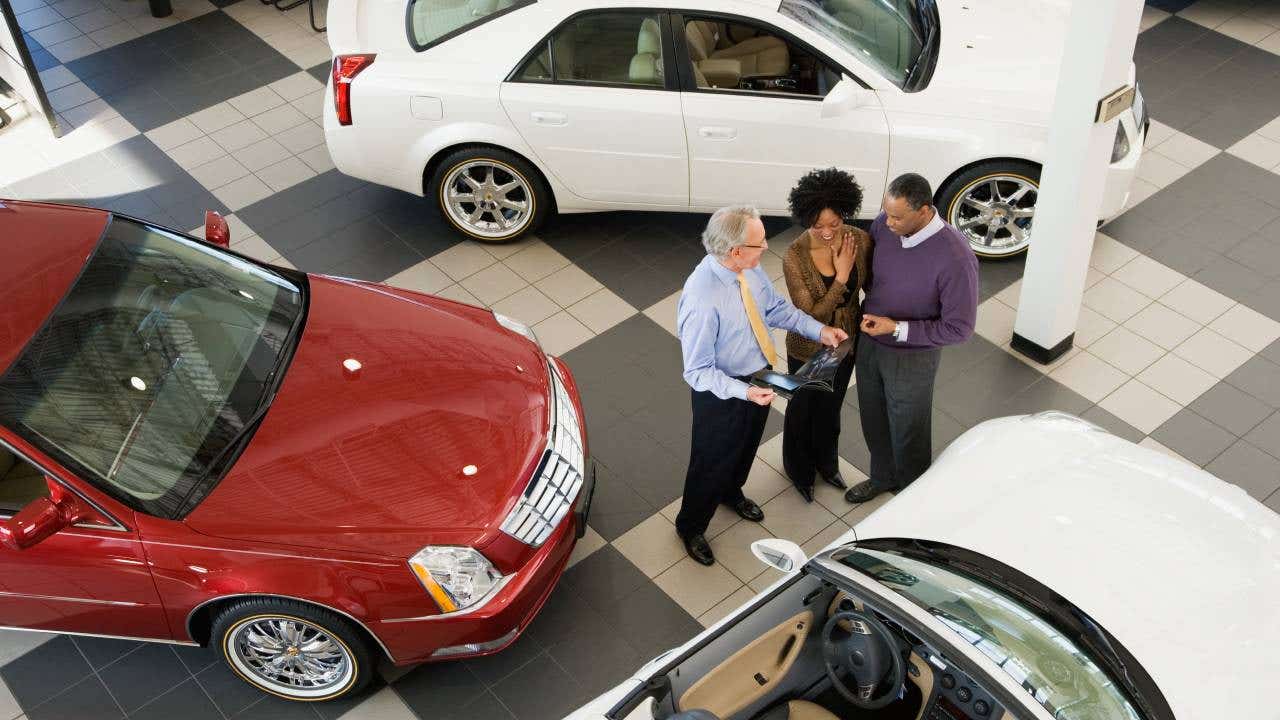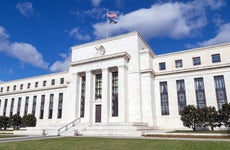When will car interest rates start dropping?

The Bankrate promise
At Bankrate we strive to help you make smarter financial decisions. While we adhere to strict , this post may contain references to products from our partners. Here's an explanation for .
Rising interest rates have impacted almost every facet of the economy, from the price of eggs to the amount you pay for a loan. And while the Federal Reserve skipped increasing the federal funds rate again at the June meeting, rates have increased a total of 11 times during this economic cycle.
As we near the summer car-buying season, it is wise to understand how these higher rates might impact the price you pay to secure a new set of wheels. Is it better to wait for rates to decrease, or is this another new normal that car buyers must come to terms with? And if you opt to wait, how long will you be waiting?
We sat down with Bankrate Chief Financial Analyst Greg McBride to explore these questions.
Rates likely won’t decrease this year
To put it simply, rates aren’t expected to decrease this year. This is primarily due to the continued work from the Federal Reserve to quell inflation. But higher interest rates aren’t the only thing making car loans more expensive this year.
“Higher interest rates do make it more expensive to borrow, and that is a braking mechanism on the economy as car buyers,” explains McBride. “Rising interest rates are another factor making it costlier to finance to purchase and finance a vehicle.”
McBride is referencing the higher vehicle prices that have coincided with a surge in interest rates. October average vehicle prices rose slightly, according to Kelley Blue Book, with the average new vehicle costing over $48,200. And a more expensive car will cost more for borrowers to finance.
As displayed below, interest rates for both new and used vehicles have steadily increased since the pandemic began in 2020.
So, is now a good time to finance a car?
The answer comes down to your needs. If you have a set of wheels in the driveway that get you from point A to point B, it might be smart to stick with what you have. But if you need a vehicle, prepare to spend more money on financing, especially if you have poor credit.
Competitive rates for poor credit borrowers will be hard to find
Moves made by the Fed do not dictate the interest rates you receive when purchasing a car but rather impact lenders’ cost to provide money for your purchase. Those costs get passed on to borrowers, and lenders tighten their lending criteria. Because the federal funds rate has increased 11 times since early 2022, borrowers will feel the domino effect.
Those impacted most disproportionately are those with poor credit history, explains McBride.
“Not only will they continue to see much higher rates, but the ability to borrow and the amount that you get approved for could also look different as the year progresses,” he says.
Borrowers falling under the deep subprime category, between 300 and 500, can expect rates over 14 percent for new and over 21 percent for used, according to Experian’s third quarter of 2023 averages.
Unlike those with strong credit, bad credit borrowers do not have the leverage to find the best available rates.
High prices hit wallets harder than interest rates
Though growing interest rates have been directly influenced by choices made by the Federal Open Market Committee, that’s not the only factor costing consumers.
What’s really gone up, McBride says, is vehicle prices. “The impact of higher interest rates is kind of small potatoes by comparison.”
While interest rates have increased at the fastest pace in 40 years, the real trouble is escalating vehicle prices. Prices shot up during the pandemic and remain high. Even as car prices have stabilized, high interest rates negate any real wins.
“The good news for consumers,” explained Jonathan Smoke in his recent Cox Automotive report, “is that the rates on auto loans may not worsen despite the threat of another rate increase from the Fed.
“The rates consumers pay on auto loans are more tied to bond yields and yield spreads than the Fed Funds Rate,” he noted.
Luckily for drivers, Smoke thinks those two factors have already peaked due to credit tightening during the banking crisis.
Additionally, wholesale vehicle prices have decreased in the spring, which may mean lower prices for used car shoppers this summer. More cars available on the lot will, in turn, create less competition for securing your dream car.
How to still get the best auto loan deal
You may need to buy a car even when the economy’s set against you. If so, consider the following tips to still walk away with a good deal.
- Shop around. Although most lender options currently offer similar rates, shopping around and finding the best rate you can secure is still important. You can save extra money by paying close attention to additional fees that lenders may enforce.
- Find the true cost of ownership. Vehicle ownership costs are more than just your monthly car payment. Instead, take the time to calculate the true all-in cost, which covers aspects like trips to fill up your tank or maintenance along the way.
- Lock in the expected rate. If your lender offers it, applying for loan preapproval will tell you exactly what you will have to pay each month.
- Consider driving an EV. Outside of the clear environmental benefits, driving electric can cost you less money throughout the ownership. EV incentives can also put money back in your pocket.
But the best way to secure a competitive edge when it comes to auto loan financing is to ensure your credit is in tip-top shape, advises McBride. He explains that a higher credit score will mean easier loan approval and the added perks that come with better interest rates.
Next steps
It’s hard to know without a crystal ball, but experts think interest rates likely won’t come down anytime soon. With that in mind, spend this time improving your credit to ensure that no matter what the available rates are you will benefit from the most competitive ones offered.
Related Articles



